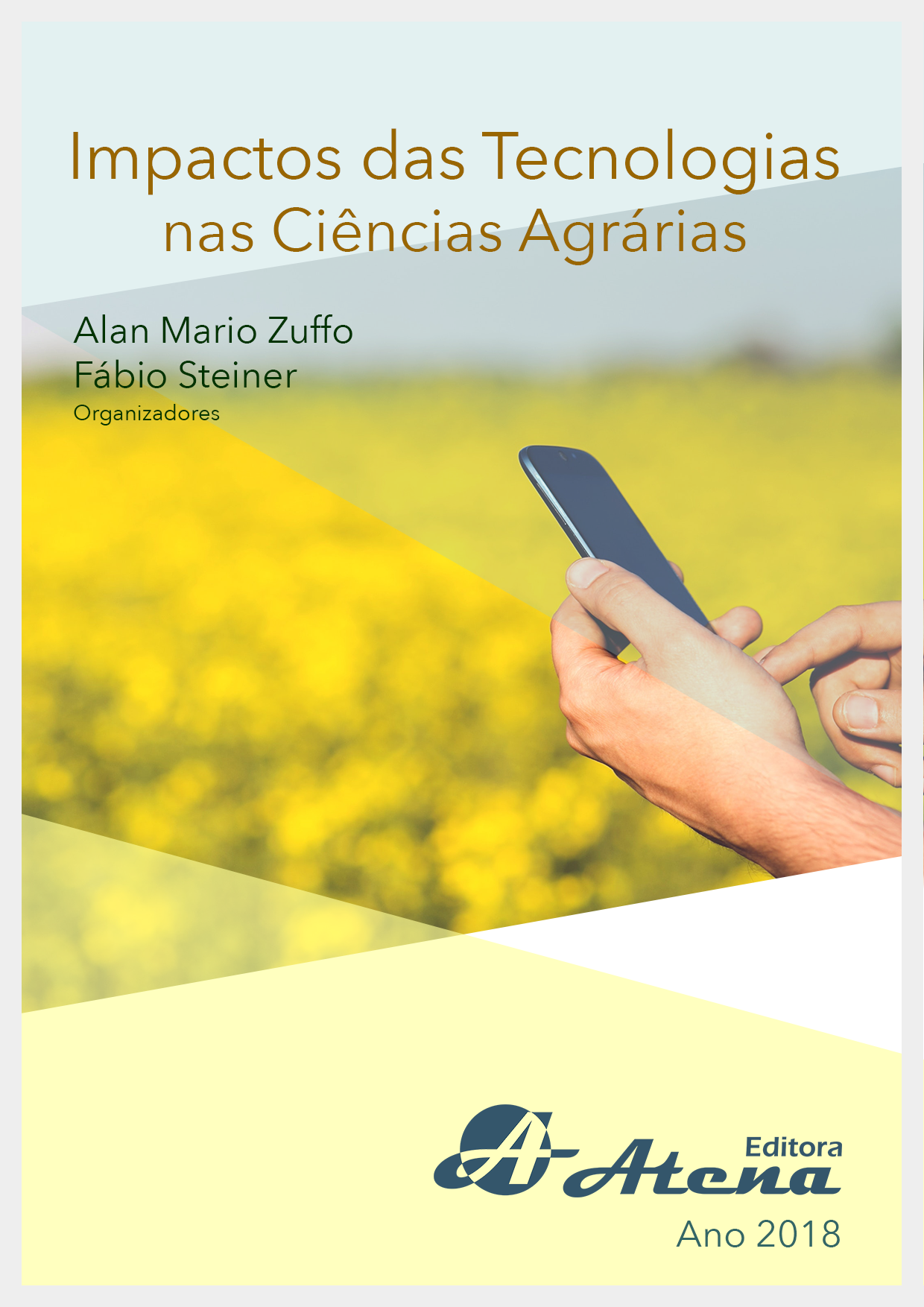
QUALIDADE DE LUZ NO CRESCIMENTO VEGETATIVO DO ESPINAFRE-DA-NOVA-ZELÂNDIA (Tetragonia tetragonioides (Pall.) Kuntze)
O espinafre da Nova Zelândia (Tetragonia
tetragonioides (Pall.) Kuntze) é uma planta
herbácea, folhosa em formatos triangulares e de
coloração verde-escura. O objetivo do trabalho
foi avaliar o crescimento vegetativo da cultura
do espinafre quando submetidos à diferentes
ambientes de luz. O experimento foi realizado em
casa de vegetação na Universidade Federal do
Recôncavo da Bahia (UFRB), Cruz das Almas – BA.
O delineamento experimental foi o inteiramente
casualizado, utilizando-se 5 ambientes de luz com
as malhas: 1) malha ChromatiNet® Vermelha;
2) malha ChromatiNet® Azul (Polysack Plastic
Industries); 3) malha termorrefletora Aluminet®;
4) Malha Preta e 5)Tratamento controle, com 6
repetições. Após 59 dias do transplantio, as plantas
foram avaliadas nas variáveis: altura, índice de
clorofila A e B, diâmetro e massa seca do caule,
número e massa seca das folhas, área foliar total e
específica, massa seca da parte aérea, do sistema
radicular e total, comprimento e volume de raiz. Os
dados foram processados utilizando o programa
estatístico computacional “R”, onde foi aplicado o
teste de Tukey a 5%. As malhas coloridas, a preta
e a aluminet influenciaram significativamente
todas as variáveis estudadas, com exceção de
clorofila A, diâmetro do caule, massa seca das
folhas, comprimento, massa seca e volume de
raiz. Os ambientes de luz proporcionados pelo uso
de telas coloridas apresentam efeitos benéficos
para produção vegetal. Maior altura de plantas foi
verificada na malha vermelha. Maior área foliar foi
obtida no cultivo em malha aluminet. E maiores
valores em matéria seca foram observados nas
plantas crescidas sob a malha preta.
QUALIDADE DE LUZ NO CRESCIMENTO VEGETATIVO DO ESPINAFRE-DA-NOVA-ZELÂNDIA (Tetragonia tetragonioides (Pall.) Kuntze)
-
DOI: Atena
-
Palavras-chave: Espinafre; malhas fotoconversoras; qualidade espectral.
-
Keywords: Spinach; fotoconversoras screens; spectral quality.
-
Abstract:
The New Zealand spinach (tetragonia tetragonioides (Pall.) Kuntze) is a
herbaceous plant, hardwood floors in triangular shapes and dark-green color. The objective
of this work was to evaluate the vegetative growth of the culture of the spinach when
submitted to different light environments. The experiment was conducted in a greenhouse
at the Universidade Federal do Recôncavo da Bahia (UFRB), Cruz das Almas, BA. he
experimental design was completely randomized, using 5-light environments with the
meshes: 1) red Mesh ChromatiNet®; 2) blue Mesh ChromatiNet® Fabric (Polysack Plastic
Industries); 3) mesh termorrefletora Aluminet®; 4) black Mesh and 5) control treatment,
with 6 repetitions. After 59 days of transplanting, the plants were evaluated in the following
variables: height, chlorophyll A and B, diameter and dry mass of the stem, number and dry
mass of leaves, total leaf area and specific, dry mass of shoot, root and total root length and
volume. The data were processed with the computational statistical program “R”, where
it was applied the Tukey test at 5%. The meshes in color, black and aluminet significantly
influenced all variables studied, with the exception of chlorophyll a, stem diameter, dry
mass of leaves, length, dry mass and volume of roots. The environments of light provided
by the use of color screens have beneficial effects on plant production. Greater plant height
was checked on the red screen. Greater leaf area was obtained in cultivation in screen
aluminet. And higher dry matter values were observed in plants grown under the black
mesh.
-
Número de páginas: 15
- Carolina Haber Mellem


